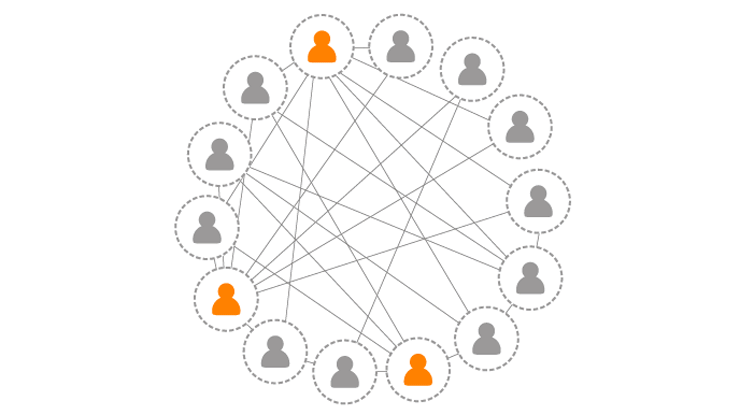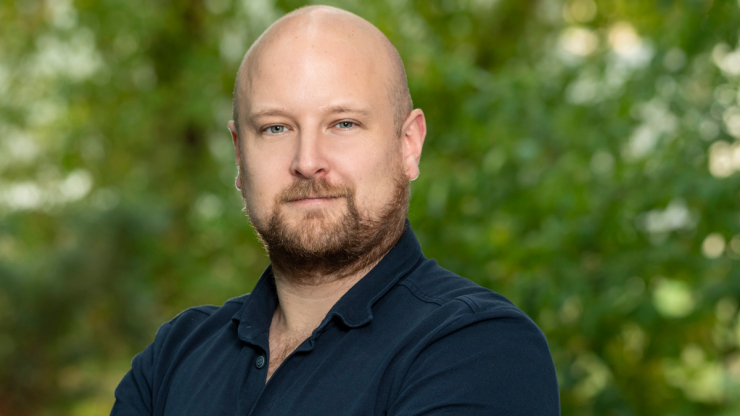Studies have shown that what people in social networks perceive to be a majority opinion is often nothing more than an illusion. An American researcher Kristina Lerman of the University of Southern California has been working on this issue. She found out some remarkable things in connection with social networks and opinion formation: The process of how opinions are shaped has taken an entirely new dimension with the advent of social networks like Facebook or Twitter. She shows this in the following example.

The 14 icons in the graphic above represent 14 different persons who are active in social networks. The three orange-colored individuals espouse an opinion that differs from the opinion of the gray people. So, it’s an opinion that is only held by the minority (3 from14). But the orange nodes – as opposed to the gray ones – are very active. They are connected to many more nodes, and especially important is that they are also connected to many gray nodes.
The more often they post their opinion on a certain topic, the more all of their “friends” are confronted with it. If the gray people – as shown in the graphic– are then also less active and are friends with more orange than gray people, they are presented with an illusion that the orange opinion is the majority opinion. The inclination is then to succumb to the illusion – even if in fact only a minority held the opinion at the outset.
In the current debates on the formation of opinion several important terms are actually resurgent, some of which have been around for a long time in areas of research on freedom of expression and media effects.
Media and journalists exert a great power on public opinion formation through their ability to set the agenda. While they are unable to tell people what to think directly, they do dictate what people begin to form their opinions about. With the advent of the internet and social networks, many more actors have been able to take up roles as opinion leaders alongside the journalists.
A study by the Pew Research Center (2014) found that the spiral of silence mechanism is especially effectual on social networks. It was based on a survey of 1,800 users of social media regarding the NSA revelations. Only 42% were willing to post their opinions on the revelations on social networks, while 86% would have been ready to discuss offline. The researchers concluded that the social networks and their simplistic connections to like-minded friends discourage people from expressing their opinion if it is one they perceive to be not widely held among their friends. That means people silenced themselves online.
 Young people are not only demonstrating their political commitment, but also how digital media can be used for social and political processes.
Participate instead of just running along
Young people are not only demonstrating their political commitment, but also how digital media can be used for social and political processes.
Participate instead of just running along
 Teachtoday spoke with Björn Milbradt about the role of digitization in promoting democracy.
Interview with Dr. Björn Milbradt
Teachtoday spoke with Björn Milbradt about the role of digitization in promoting democracy.
Interview with Dr. Björn Milbradt

